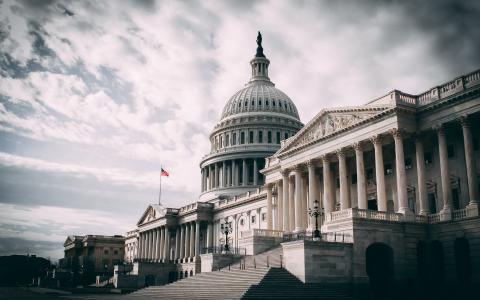
President Biden's $6 trillion spending plan reportedly assumes that his proposed capital gains tax hike begins in April – meaning it would likely be too late for wealthy Americans to dodge the new levy.
The Wall Street Journal reported this week the effective date for the higher capital-gains tax rate would be correlated to Biden's announcement of the increase in April, when he unveiled the $1.8 trillion American Families Plan.
In order to pay for the sweeping spending plan, the president called for nearly doubling the capital gains tax rate to 39.6% from 20% for Americans earning more than $1 million, restoring the top individual income tax rate to 39.6% and eliminating the so-called "step-up" basis.
Still, the tax increase faces an uncertain future in Congress: Republican lawmakers have balked at the scale of Biden's spending plans and have unified to protect the 2017 tax law from any potential rollbacks. Some moderate Democrats have also raised concerns about Biden's the proposed increases, warning that higher tax rates could derail the nascent economic recovery from the coronavirus pandemic.
The retroactive change to the tax law elicited fierce criticism from the leaders of the top six biggest U.S. banks, who testified before Congress on Thursday. The CEOs warned the proposal could spook investors and small businesses, inflicting more economic damage.
"Anything that is retroactive creates extra anxiety and extra uncertainty, and that would just slow down economic activity," said David Solomon, CEO of Goldman Sachs. "So I think retroactivity is something to be very, very cautious about. And I do think a chilling of investment activity through a higher capital-gains tax is something to also think through carefully."
The rationale behind a retroactive tax hike is that it prevents the rich from taking preventative measures to protect their assets.
One analysis by the Penn Wharton Budget Model, a nonpartisan group at the University of Pennsylvania's Wharton School, suggests that rich Americans would employ techniques to avoid the rate increase. Tax avoidance, most of it legal, would cut about $900 billion of the estimated $1 trillion that a capital gains tax increase could generate for the federal government over the next decade, the researchers said.
For instance, they said, taxpayers would likely realize more gains in years when taxable incomes fall below the threshold. They also suggested that an increased share of business incomes would be organized via pass-through interests instead of C-corporations in order to avoid the second layer of shareholder tax.
"A large body of empirical research shows that when taxes on capital gains increase, realizations of capital gains fall," the researchers wrote. "Compared with other forms of income taxed under the individual income tax, capital gains are relatively responsive, or elastic, with respect to tax rates."
Taxes on long-term capital gains – generally classified as an asset that's held for more than one year – currently range from 0% to 20%, depending on a person's income. Wealthier investors are also subject to an additional 3.8% tax on long- and short-term capital gains that's used to fund ObamaCare. Short-term capital gains on assets sold within a year are typically taxed as ordinary income.
Capital gains are taxed favorably when compared to wage and salary income; under existing law, the richest Americans pay a top tax rate of 37% on ordinary income, while the top tax rate on capital gains is 23.8%.
The president campaigned on equalizing the capital gains and income tax rates for rich Americans.
This article originally appeared on Fox Business.



